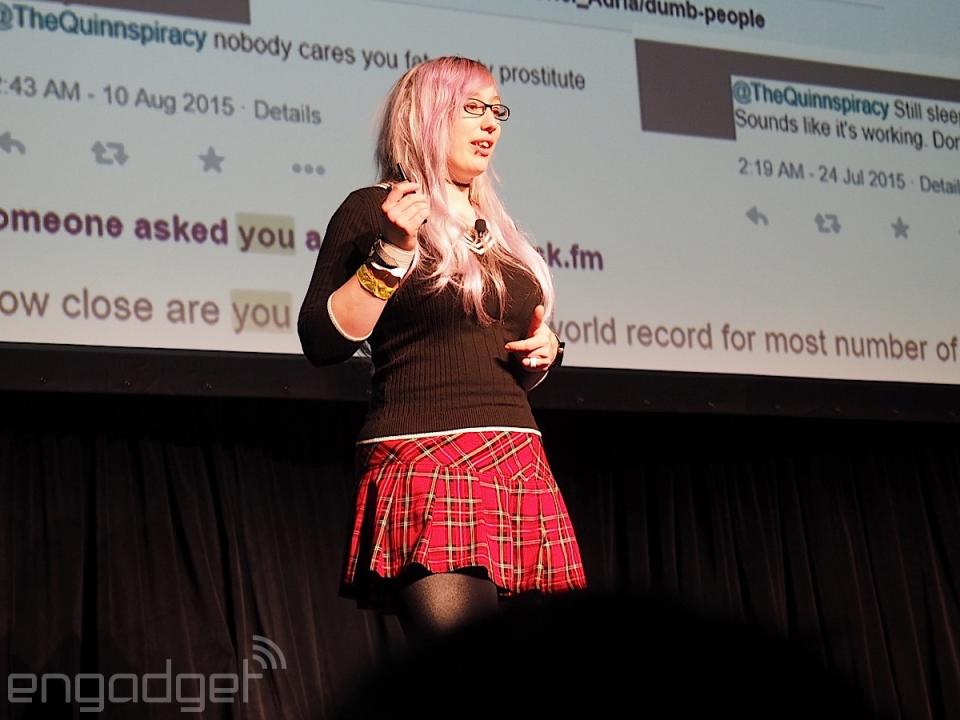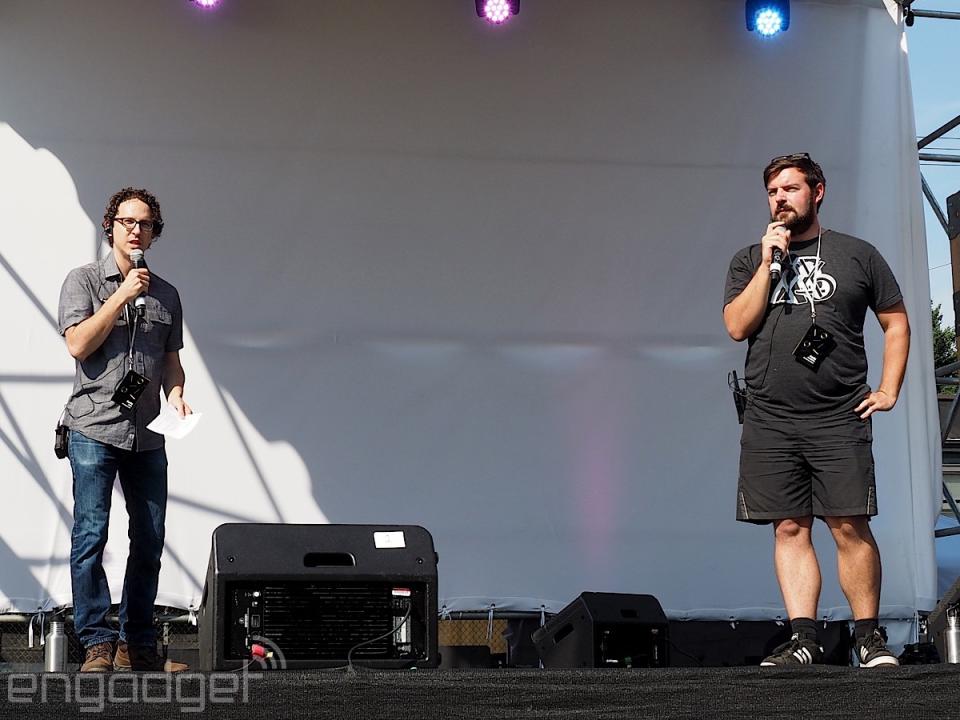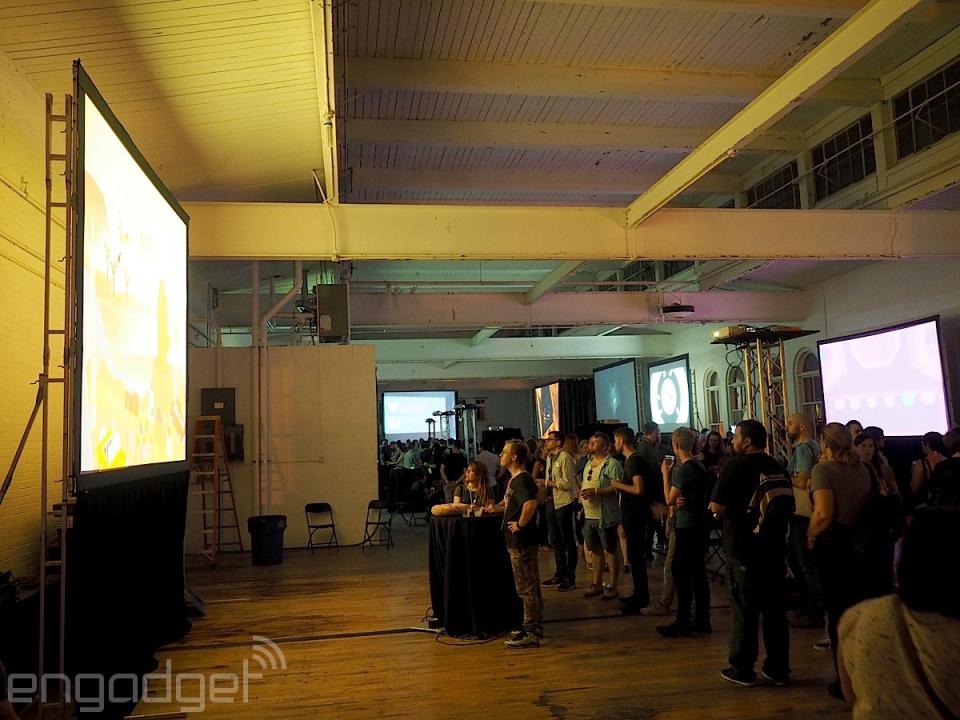How an independent art and technology festival captured my heart

When I told my friends and co-workers I was attending the XOXO Festival in Portland, Oregon, last weekend, I had a difficult time explaining what it was about. The event website describes it as an "experimental festival celebrating independently produced art and technology." But that doesn't quite explain why the event, now four years in the running, struck a chord with me. One of the initial reasons I was drawn to XOXO was that it's about embracing technology not just as a means to make money, but also as a means for creativity and independence. This year, however, XOXO meant much more. The central theme of the festival, more than any other year, was about one thing: community.
The idea of XOXO is simply this: To bring independent creators together. "They're the people who are using the internet in creative ways to bypass traditional publishers, traditional gatekeepers and retain creative and financial control over their own work," said Andy Baio, who co-created XOXO along with friend and fellow Portland resident, Andy McMillan. "This includes musicians, filmmakers, video game designers, hardware hackers, writers and designers." As long as you used the internet in some way to carve a path for yourself, XOXO is place for you. The talks and the events are designed to not only celebrate independent creators -- be they app developers or podcasters -- but also allow participants to listen and learn from the struggles that others have faced.
As a result, many of the talks at XOXO are emotionally driven. The presenters often show their vulnerability onstage as they reveal their trials and tribulations. Plenty of the ones this year centered around the difficult issues of being independent -- Mallory Ortberg from The Toast gave a humorous speech on how she bootstrapped her women-run publication; C. Spike Trotman of Iron Circus Comics spoke about the challenges of making a living on indie comics especially as a black woman; and Heather Armstrong of Dooce told a heartbreaking story of how she had to quit blogging for a while due to increased pressure to write sponsored content and the effect it had on her family.

Zoe Quinn gave a talk on online harassment and having empathy.
But it was the sessions that centered on community that left an impression on me. Eric Meyer, well-known for his expertise on CSS, told a story of how the CSS community campaigned to have the color value #663399 officially named "rebeccapurple" in memory of his daughter who died from cancer. Amit Gupta, the founder of photography store Photojojo, explained how his internet friends collaborated on a campaign to find him a bone marrow donor after they found out he had leukemia. (They found a donor match three months after they launched the campaign. If none were found, he wouldn't be alive today.)
And then there were presentations about the ugly side of online communities. Zoe Quinn, an independent game developer whose ex-boyfriend sparked the GamerGate controversy, talked not just about the online harassment she's endured, but also her attempt at empathizing with her attackers. She said that most of them think of themselves as the good guys, and many years ago, as a teen struggling to fit in, she would've likely been on their side. Similarly, Veronica Belmont, podcaster and host of our very own Dear Veronica, told a tale about how an embarrassing GIF of herself went viral and her resulting endeavor to feel empathy for the people on the internet who were seemingly ganging up against her. Sympathy is not the same thing as empathy, Belmont said.

Andy Baio and Andy McMillan, the two founders of XOXO.
While I was certainly very moved by these talks -- I'll admit to crying after a few of them -- they wouldn't have the same gravitas and meaning if XOXO itself wasn't the most community-focused event I've ever attended. Of course, the fact that the festival limits attendees to only 1,000 people is already enough to create an intimate environment, but the organizers went above and beyond just that. This year, for example, they created a festival-wide Slack channel where attendees could not just chat online, but also self-organize into meetups and offer each other assistance. In fact, most of Friday's social activities were Slack channel meetups that weren't organized by XOXO at all. "If we can extend that and if we ever do the next XOXO, and get people to self-organize all of it, we can take a nap," joked McMillan during the event's opening remarks.
Including people of all shapes and sizes and from all walks of life was also a key factor in making XOXO feel more like a community. For the first couple of years, the early crowd comprised of predominantly white men. "It was embarrassing," said Baio. "We'd never thought of XOXO as a tech conference, but it was inheriting the systemic issues that [were] in tech." This, he said, could be because the festival grew by word of mouth primarily among an early adopter audience. "It did not reflect the community that we cared about. Importantly, it didn't reflect the 'art' part of the festival at all."

A "virtual reality lounge" was set up at XOXO for attendees to try out games on Playstation VR (formerly Project Morpheus), an Oculus DK 2 and the Samsung Gear VR.
In order to combat this, they included a diversity question in last year's survey that simply asked applicants if they identified with a group that's been underrepresented at XOXO in the past. That information was essentially factored into admission (which is done via lottery) and it's definitely had an impact. In 2014, the percentage of attendees who self-identified as women doubled to around 40 percent, although only 13 percent identified as people of color. In 2015, the numbers rose again to 45 percent for female-identified attendees and 20 percent for people of color. There's still a lot of work to be done, said Baio, but they're trying.
For 2015 in particular, they introduced the idea of subsidized passes. If you made your case in your application that there was no way you could attend XOXO unless you could get a subsidized pass (conference prices are normally $500, while the festival-only fee is $150), then you were free to attend the whole thing for just $50. In all, 50 people attended XOXO this year with those subsidized passes. Grant Roberts, an unemployed video game designer from Seattle, was one of those people. He told me he was pleased to have a chance to meet like-minded folks and get excited about making things again. Jonathan Liu, a stay-at-home dad in Portland who blogs without pay for GeekDad, also got a subsidized pass, and relished the opportunity to learn more about Kickstarter projects.

The park outside Revolution Hall, where people gathered for food, drinks, concerts and parties.
It wasn't just that either. There were quiet spaces throughout the conference for those who suffer from social anxiety or even introverts who simply needed a break from the crowd. Restrooms were marked with a sign that requested people not be concerned with the gender appearance of others. A special ADA-compliant taxi was available for free for those who needed it. Free childcare was available throughout the day and there were free non-alcoholic sodas too, making XOXO an all-ages event for the first time. A code of conduct banning harassment was also strictly enforced.
XOXO was created four years ago by Baio and McMillan out of a desire for an event that focused on this intersection between art and technology. Baio, who's perhaps better known for his personal website Waxy.org (and other achievements like coining the term "supercut" and creating the Upcoming.org social calendar), was particularly touched by independent creators thanks to his involvement with Kickstarter -- he was the company's CTO from 2009 to 2010. "I felt like there was a gap to be filled to do an event that was laser-focused on this one idea about independent art and tech." He started talking to McMillan over drinks, and McMillan, who already had three years of experience running a design festival in Belfast called Build, happened to have the same idea as well.
The two then launched a $125,000 Kickstarter campaign to fund the conference, a goal that was met within two days and reached $175,000 by the end. On September 13th, 2012, the first-ever XOXO Festival was held at the YU Contemporary in Portland. A total of 400 people -- including myself -- attended the event, which at the time consisted of just two days of talks, a film night, a music night, a video game arcade and an arts and crafts market. Even though they never planned to have a second one, the response to the first was so overwhelmingly positive, they decided to do XOXO again in 2013. This time, they added a second night of music, an evening of tabletop games, plus cheaper festival-only passes with which you could attend everything but the talks. After another successful year, they hosted it again in 2014, this time without the market but with a brand-new evening of storytelling and podcasts called XOXO Story. And, of course, they did it again this year.

Several indie video games were set up on large projectors for XOXO Arcade.
"I'm not really sure why, but there's something about XOXO that's repellent to cynical, snarky, angry people," said Baio of the community that the festival attracts. After all, he said, it's named after hugs and kisses. "A lot of people like to draw a comparison with SXSW," he said of the other technology-focused festival in Austin, Texas. "It was too big and no longer fulfilling what they were getting out of it." Belmont said that XOXO felt like how SXSW Interactive was 10 years ago. "It's where the creatives, the technologists and the big thinkers get together and have meaningful conversations," she said.
In many ways, XOXO is a love fest and a nerd con all rolled into one. I enjoyed the live tapings of excellent podcasts like Hello from the Magic Tavern, You Look Nice Today and Reply All. I loved the personal stories told during a live storytelling event called Fray that had me laughing and crying. I was moved and educated by the Feminist Frequency videos that Anita Sarkeesian showed during film night. I was entertained by a showing of House of Cosbys and a Rick and Morty episode by creator Justin Roiland. I had fun playing indie video games and board games with the friendliest strangers I've ever met.

A sketch of the two Andys of XOXO, done by illustrator Lucy Bellwood during the event.
By the time I left on Monday morning, my heart felt like it had grown 10 times. I feel like I've made new friends. I feel inspired to make and do new things. More importantly, I feel like I've discovered a new community where I belong. Even a week later, I'm still hanging out in the XOXO Slack channel, which Baio and McMillan said they'll keep running for as long as they can.
Right now, Baio has no plans to have another XOXO next year. But that's what he says after every festival. "I know you can only say that so many times until people are like, 'Yeah right,'" he said. "But we do honestly have no plan to do another XOXO after this one. ... What happens is, when we wrap up, we look at how it went. Then we decide if we want to do another one. Whether or not we can keep this interesting. That's why we keep the word 'experimental' in the description."
"If it ceases to be interesting, then we have no qualms killing it," he said. Considering how wonderful this year's event was, I'm betting there will be another one. And I'll try my best to attend that as well.
[Image credit: All photos by the author; illustration by Lucy Bellwood]




































